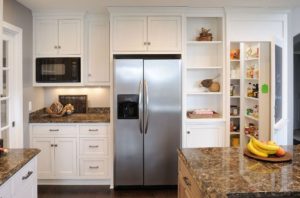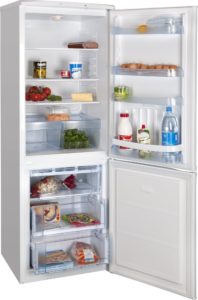Refrigerator climate class
When choosing a refrigerator, you need to pay attention to the climate class of the option you like. This characteristic is as important as power consumption or the number of cameras.
The content of the article
What is the climate class of a refrigerator?
This is an indicator that specifies the temperature and humidity ranges in which it is recommended to use a particular model. For example, if one refrigerator is used in the Far North, and another in the southern regions (with their long summers), they should be of different climate classes. Because the first one works in severe frost conditions, and the second one works in constant heat and dry air.
How to find out the climate class of a refrigerator
- Look at the accompanying documents – this key indicator is mandatory specified both in the instructions and in the passport.
- View summary sticker, which can be found either on the back (side) panel of the case or inside one of the cameras.
The benefits of climate class information when purchasing a refrigerator
Based on this indicator, it is easy to understand whether the model you like is suitable for your home (or office), and how rational and safe it is to use it at the current temperature and humidity.
Attention! Operating a refrigerator in conditions that do not correspond to its climate class increases the likelihood of its breakdown and leads to a decrease in the quality of its operation, and therefore to deterioration in food storage.
This information is also useful because it gives a general idea of the design features and technical characteristics of the model you like. This indicator is directly related to energy consumption, motor power, quality of thermal insulation and heat transfer area of the equipment.
Types of climate classes of refrigerators
In general there are 4 of them:
- N – normal, normal;
- SN – subnormal, subnormal;
- ST – subtropical, subtropical;
- T – tropical, tropical.
Important! The manufacturer's warranty applies only to those refrigerators that are operated in accordance with their climate class. If during the diagnostics it turns out that the equipment broke down because it was working in conditions unsuitable for it, the owner will have to pay for its repair, in whole or in part. And this despite the current warranty period.
So you need to understand how N differs from ST, and when to give preference to the first and when to give preference to the second. To better navigate, let's look at all 4 types in more detail, focusing on the key features of each.
Normal class and its characteristics
 This is a universal option that provides for operation at moderate temperatures (from 16 to 32 degrees Celsius). The N-segment presents budget models with, as a rule, low energy consumption - the most popular choice for apartments and residential buildings due to its efficiency.
This is a universal option that provides for operation at moderate temperatures (from 16 to 32 degrees Celsius). The N-segment presents budget models with, as a rule, low energy consumption - the most popular choice for apartments and residential buildings due to its efficiency.
It is also acceptable to use at temperatures above +32 0C, if the room is air-conditioned, or below +16 0C, if the room is heated.
Subnormal class and its characteristics
This type is more oriented towards industrial use. The operating range starts from 10 degrees Celsius and reaches the same 32. SN refrigerators have slightly higher energy consumption than normal ones, but they break down much less often when working in rooms with unstable or poor heating.
Models of this category are installed in basements, cold corridors, and utility rooms. A separate and quite popular area of application is industrial (in small industries).
Subtropical class and its characteristics
 Designed for regions and rooms with increased humidity and relatively high (mainly) temperatures. Operating range shifted: starts from +18 0C, but reaches +38. Representatives of this class are good for their resistance to seasonal climate fluctuations, but they break down relatively often when working in cold rooms. Therefore, when operating them in winter, it is necessary to carefully monitor the quality of heating of the room in which they are installed.
Designed for regions and rooms with increased humidity and relatively high (mainly) temperatures. Operating range shifted: starts from +18 0C, but reaches +38. Representatives of this class are good for their resistance to seasonal climate fluctuations, but they break down relatively often when working in cold rooms. Therefore, when operating them in winter, it is necessary to carefully monitor the quality of heating of the room in which they are installed.
Tropical class and its characteristics
This category was created for regions with very dry air and high temperatures. T-models don’t mind the heat, because they can be operated in the range from 18 to 43 degrees Celsius.
Tropical representatives have high energy consumption, and this is one of the reasons why they have earned relatively little popularity in the vast expanses of post-Soviet countries.
Double climate classes, their originality
Manufacturers are increasingly releasing models designed for a wider (than standard) temperature range. Their markings and breadth of operating mode are as follows:
- N-ST – from 16 to 38 degrees Celsius;
- SN-ST – from 10 to 38;
- N-T – from 16 to 43;
- SN-T – from 10 to 43.
The peculiarity lies in the additional thermal insulation of the chambers: the thicker its layer (in general), the wider the operating range.
What are multi-class refrigerators
They are considered models that support 4 operating temperature conditions, that is, they are in the SN-T category. Today they are presented in the collections of such market flagships as Liebherr and Whirlpool, and captivate with their versatility.
When choosing a multi-class refrigerator, it is important to remember that its energy consumption level is A+. It will cost significantly more to operate than usual.






